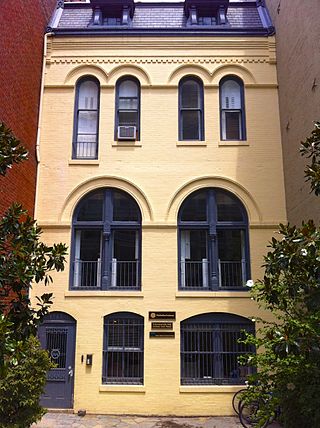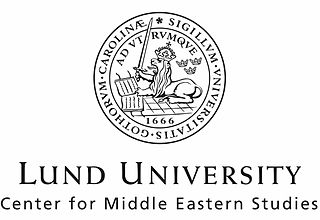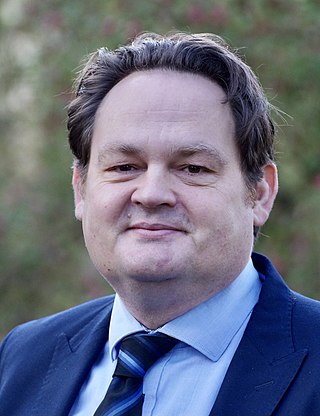
The Levant is a term used to define the historical and geographical subregion that borders the Eastern Mediterranean sea to the west and core West Asia, or by the political term, Middle East, to the east. In its narrowest sense, which is in use today in archaeology and other cultural contexts, it is equivalent to Cyprus and a stretch of land bordering the Mediterranean Sea in western Asia: i.e. the historical region of Syria, which includes present-day Israel, Jordan, Lebanon, Syria, the Palestinian territories and most of Turkey southwest of the middle Euphrates. Its overwhelming characteristic is that it represents the land bridge between Africa and Eurasia. In its widest historical sense, the Levant included all of the Eastern Mediterranean with its islands; that is, it included all of the countries along the Eastern Mediterranean shores, extending from Greece in Southern Europe to Egypt and Cyrenaica in Northern Africa.

The Middle East is a geopolitical region encompassing the Arabian Peninsula, the Levant, Turkey, Egypt, Iran, and Iraq.

Hesse or Hessia, officially the State of Hesse, is a state in Germany. Its capital city is Wiesbaden, and the largest urban area is Frankfurt, which is also the country's principal financial centre. Two other major historic cities are Darmstadt and Kassel. With an area of 21,114.73 square kilometers and a population of over six million, it ranks seventh and fifth, respectively, among the sixteen German states. Frankfurt Rhine-Main, Germany's second-largest metropolitan area, is mainly located in Hesse.

The Near East is a transcontinental region around the East Mediterranean encompassing parts of West Asia, the Balkans, and North Africa; it also includes the historical Fertile Crescent, the Levant, Anatolia, East Thrace and Egypt. The term was invented by modern Western geographers and was originally applied to the Ottoman Empire, but today has varying definitions within different academic circles. The term Near East was used in conjunction with the Middle East and the Far East, together known as the "three Easts"; it was a separate term from the Middle East during earlier times and official British usage. Both terms are used interchangeably to refer to the same region. Near East and Middle East are both Eurocentric terms.

The Philipps University of Marburg is a public research university located in Marburg, Germany. It was founded in 1527 by Philip I, Landgrave of Hesse, which makes it one of Germany's oldest universities and the oldest still operating Protestant university in the world. It is now a public university of the state of Hesse, without religious affiliation.

Middle Eastern studies is a name given to a number of academic programs associated with the study of the history, culture, politics, economies, and geography of the Middle East, an area that is generally interpreted to cover a range of nations including Egypt, Iran, Iraq, Israel, Jordan, Lebanon, Oman, Palestine, Saudi Arabia, Syria, Turkey, and Yemen. It is considered a form of area studies, taking an overtly interdisciplinary approach to the study of a region. In this sense Middle Eastern studies is a far broader and less traditional field than classical Islamic studies.

St. Elizabeth's Church(German: Elisabethkirche) is an Evangelical church in Marburg, Germany. Built by the Teutonic Order on the site of Elizabeth of Hungary's tomb in the 13th century, the church is one of the earliest Gothic churches in Germany. Her tomb made the church an important pilgrimage destination during the late Middle Ages, and the Landgraves of Hesse were interred in the church. After the conversion of Landgrave Philip I in the 16th century, the church became Protestant, and remains a parish of the Evangelical Church of Kurhessen-Waldeck.

The Middle East Institute (MEI) is a non-profit, non-partisan think tank and cultural centre in Washington, D.C., founded in 1946. It seeks to "increase knowledge of the Middle East among the United States citizens and promote a better understanding between the people of these two areas."

Wolfgang G. Schwanitz is a German-American Middle East historian. He is a specialist in comparative studies of modern international relations between the United States, the Middle East, and Europe. Schwanitz is known for his research on relations between Arabs, Jews, and Germans, and on the history of German relations with the Middle East.

Christianity, which originated in the Middle East during the 1st century AD, is a significant minority religion within the region, characterized by the diversity of its beliefs and traditions, compared to Christianity in other parts of the Old World. Today, Christians make up approximately 5% of the Middle Eastern population, down from 13% in the early 20th century. Cyprus is the only Christian majority country in the Middle East, with Christians forming between 76% and 78% of the country's total population, most of them adhering to Eastern Orthodox Christianity. Lebanon has the second highest proportion of Christians in the Middle East, around 40%, predominantly Maronites. After Lebanon, Egypt has the next largest proportion of Christians, at around 10% of its total population. Copts, numbering around 10 million, constitute the single largest Christian community in the Middle East.

Egypt–Japan relations are foreign relations between Egypt and Japan. Such relations are described by the Egyptian ambassador to Japan as a "very strong friendship", with embassies mutually established. At present, the two nations maintain a cordial relationship with strong economic and trade relations. Since the formal diplomatic relations were established, both countries have kept embassies in each other's capitals, demonstrating a dedication to continued communication and cooperation. Bilateral connections have been strengthened via a history of friendly exchanges and frequent visits between the two countries at different governmental levels. Their interactions are mostly shaped by their economic and trade ties, which include major Japanese investment in Egypt and a thriving exchange of goods and services. This economic involvement is backed by a variety of agreements that ease trade, protect investments, and promote mutual growth. Currently, Egypt and Japan have a friendly and cooperative relationship based on common interests and a commitment to regional stability and prosperity. This connection has grown to include considerable cultural exchanges and educational collaborations, strengthening the two countries' already strong ties.
Tell el-Burak is an archaeological site located in a lush agricultural section of southern littoral of Lebanon, it has been under investigation by the American University of Beirut and the University of Tübingen since 1998. The excavations have revealed three occupations on the tell, the latest in the Ottoman Period, the next in the Iron Age, and the earliest in the Middle Bronze Age.
Jeffrey R. Chadwick is an American professional archaeologist and university professor. He serves as Jerusalem Center Professor of Archaeology and Near Eastern Studies at the Brigham Young University Jerusalem Center in Israel, and as Associate Professor of Religious Education at Brigham Young University in Utah, USA. He is also a senior field archaeologist and director of excavations in Area F at the Tell es-Safi/Gath Archaeological Project in Israel.

The Center for Middle Eastern Studies (CMES) is part of the Faculty of Social Sciences at Lund University, based in Lund, Sweden. It was founded in 2007 to further the understanding of the Middle East, and provide the business sector, state institutions and NGOs with "effective tools for communication". The backbone of the center is the strategic research area known as the MECW, or The Middle East in the Contemporary World, which was funded by the Swedish Research Council. The MA program began in 2010. It is a two-year, four-semester, program that offers a wide range of specialization within Middle Eastern Studies.
Ralph K. Pedersen is a nautical archaeologist from Levittown New York, United States. He was the DAAD Gastdozent für Nautische Archäologie at Philipps-Universität Marburg 2010–2013, and has been the "Distinguished Visiting Professor in Anthropology" and Knapp Chair in Liberal Arts at the University of San Diego, and the Whittlesey Chair Visiting Assistant Professor in the department of history and archaeology at the American University of Beirut. He has been teaching online courses in archaeology in the History Department at Nelson University since 2009.

Hani Hayajneh is a professor of Ancient Near Eastern Languages and civilizations at Yarmouk University, Jordan. He is expert in the field of cultural heritage studies, especially the Intangible cultural heritage. His research focuses on areas including the cultural history and heritage of the Arabian Peninsula from ancient periods to modern times. He represented Jordan on cultural heritage issues in the Intergovernmental Committee of the UNESCO Convention for Safeguarding Intangible Cultural Heritage.

Albrecht Fuess is a German scholar of Islam and the history of the medieval Eastern Mediterranean. He is the professor of Islamic Studies at University of Marburg.
Gert Bange is a German structural biologist and biochemist. He is Professor of Biochemistry at the Department of Chemistry and Vice President for Research at Philipps-Universität Marburg.
Thomas Philipp was a German historian that focused on the research of medieval and modern history and political history of Near and Middle East, Ottoman Empire and the Arab world. He is considered a prominent historian in his respective field of historiography in German language.
Rachid Ouaissa is a German-Algerian academic and, since 2009, a professor at the University of Marburg. He heads the department “Politics of the Near and Middle East” at the Center for Near and Middle Eastern Studies.













